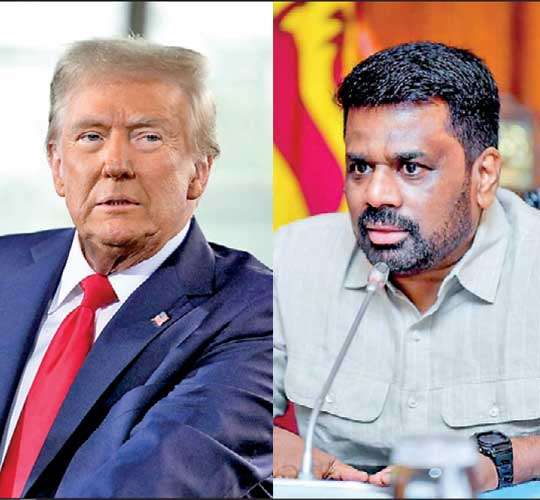
US President Donald Trump has announced a reduction in the proposed tariff on imports from Sri Lanka, settling at 30% instead of the initially suggested 44%. This decision was conveyed in a letter addressed to Sri Lankan President Anura Kumara Disanayake on July 9, 2025.
The announcement comes as a relief to some analysts who view the 30% tariff as more favorable compared to those imposed on other Asian countries such as Laos and Myanmar (40%), Cambodia and Thailand (36%), and Bangladesh (35%). However, the decision has also sparked disappointment among those who were advocating for a 20% tariff, arguing that the current rate still places a significant burden on Sri Lankan exports.
Comparative Tariff Landscape
While Sri Lanka faces a 30% tariff, countries like Japan, Malaysia, and the Philippines have been subjected to a lower tariff of 25%. The United States remains a crucial export market for Sri Lanka, accounting for 27% of its total manufactured exports, valued at $12.8 billion as of 2024. Notably, textile and apparel exports make up 64% of Sri Lanka’s exports to the US.
The move represents a response to the trade imbalance, which saw a $2.6 billion deficit in favor of Sri Lanka in 2024. Trump’s administration has highlighted this imbalance as a threat to the US economy and national security, necessitating corrective measures.
Reactions from Sri Lanka
In light of the tariff decision, Sri Lanka’s Treasury Secretary Dr. Harshana Suriyapperuma expressed hope for a favorable outcome from ongoing discussions with the US Trade Representative (USTR). “We had several rounds of discussions with the USTR. They’ve indicated Sri Lanka is in a relatively better position, but at the end of the day, the decision will factor in the broader global trade scenario,” he stated.
The Free Trade Zone Manufacturers’ Association (FTZMA) has raised concerns about the potential economic impact of the tariffs, warning of up to 50,000 job losses in the initial phase and a diminished competitive edge in South and Southeast Asia.
Details from Trump’s Letter
In his letter, President Trump extended an invitation for Sri Lanka to engage more deeply with the US economy. He emphasized the need for balanced trade, citing years of non-reciprocal trade relations due to Sri Lanka’s tariff and non-tariff barriers.
“Starting on 1 August 2025, we will charge Sri Lanka a tariff of only 30% on any and all Sri Lankan products sent to the United States,” Trump wrote. “Please understand that the 30% number is far less than what is needed to eliminate the trade deficit disparity we have with your country.”
Trump warned that any increase in Sri Lanka’s tariffs would result in a corresponding increase in US tariffs. He assured that if Sri Lanka were to open its markets and eliminate trade barriers, the US might consider adjusting its stance.
Implications and Future Outlook
The tariff decision underscores the ongoing challenges in US-Sri Lanka trade relations. While the reduction from 44% to 30% is seen as a concession, it also highlights the complexities of international trade negotiations. The focus now shifts to how Sri Lanka will respond and whether it will adjust its trade policies to mitigate the impact of the tariffs.
Looking forward, both nations are expected to continue dialogue in hopes of reaching a more balanced trade relationship. The outcome of these discussions could have significant implications for Sri Lanka’s economy and its position in the global market.
As the August 1 implementation date approaches, all eyes will be on how these tariffs will influence bilateral trade and whether further negotiations could lead to a more favorable outcome for Sri Lanka.







